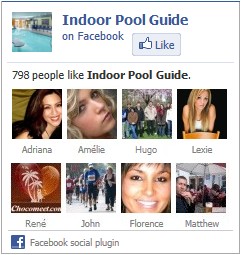
Inorganic and Organic Chlorine
Inorganic chlorine compounds such as calcium hypochlorite, sodium hypochlorite and lithium hypochlorite, as well as chlorine gas, are greatly affected by direct sunlight. They require the addition of cyanuric acid to be stabilized when used in outdoor pools. These products are recommended for indoor swimming pools. Organic chlorine compounds are products combined with cyanuric acid. Sodium dichlorostriazinetrione (« dichlor’) and trichloro-s-triazinetri-one (‘trichlor) are both popular stabilized chlorines for water treatment of outdoor pools. Calcium hypochlorite will support combustion and must never be mixed with carbonated drinks, oils of any type or an organic chlorine product such as « dichlor’ or ‘trichlor’ – explosions can result.
Effect of pH on Chlorine
The pH of water has a definite effect on the efficiency of chlorine as well as on the corrosive properties of water (covered later in this chapter.) For now, we will consider only the effect of pH on sanitation. It can be seen in Table 2.a that free chlorine is most efficient in pH ranges below the ideal range of 7.2-7.6. Some pool operators do, however, maintain pH levels higher than the ideal range. They should also maintain appropriately higher FAC levels to provide the same concentration of the active HOCL form. For example, at a pH of 8.0, 21% (about 1/5 of the FAC is in the active form. At that pH level, it would take 2.5 ppm of FAC to provide about 0.5 ppm of HOCI. At a pH of 7.5, about 1/2 (50%) of the FAC is in the active HOCI form. At that pH level, it would take only 1.0 ppm of FAC to provide the same 0.5 ppm of HOCI. For this reason, many authorities recommend that the pH of pools be maintained in the range between 7.2 and 7.6 and as close to 7.5 as practical. These conditions are also considered to be most comfortable for the swimmers’ eyes and skin.

